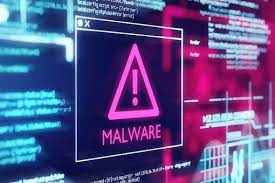Last updated on August 14, 2022
Virus and Malware Removal for Windows (PC) in Bahrain
Every year more than 24 million computers face being targeted from online attackers. With technology becoming more sophisticated, so are computer viruses and malware. Today we hope to help anyone that has unfortunately been affected by this problem, with a step by step guide of how you can remove an issue.

Before we get started, I must highlight that not one single fix will work for all virus and malware problems. Unfortunately, some removals can be tedious work. I would recommend getting in contact with us if you do not have the time nor patience to fix the issue. We pride ourselves on customer service and will be more than happy to have an expert fix the problem for you.
Computer Virus Removal
Step 1: Enter Safe Mode
Before you do anything, you need to disconnect your PC from the internet and don’t use it until you’re ready to clean your PC. This can help prevent the malware from spreading and/or leaking your private data.
If you think your PC may have a malware infection, boot your PC into Microsoft’s Safe Mode. In this mode, only the minimum required programs and services are loaded. If any malware is set to load automatically when Windows starts, entering this mode may prevent it from doing so. This is important because it can make removing the nefarious files easier since they’re not running or active.
Sadly, Microsoft has turned the process of booting into safe mode from a relatively easy process in Windows 7 and Windows 8 to one that is decidedly more complicated in Windows 10. To boot into Windows Safe Mode, first, click the Start button in Windows 10 and select the Power button as if you were going to reboot, but don’t click anything. Next, hold down the Shift key and click Reboot. When the full-screen menu appears, select Troubleshooting, then Advanced Options, then Start-up Settings. On the next window click the Restart button and wait for the next screen to appear. Next, you will see a menu with numbered start-up options; select number 4, which is Safe Mode. Note that if you want to connect to any online scanners you’ll need to select option 5, which is Safe Mode with Networking.
You may find that your PC runs noticeably faster in Safe Mode. This could be a sign that your system has a malware infection, or it could mean that you have a lot of legitimate programs that normally start up alongside Windows. If your PC is outfitted with a solid-state drive it’s probably fast either way.
Step 2: Delete temporary files
Now that you’re in Safe Mode, you’ll want to run a virus scan. But before you do that, delete your temporary files. Doing this may speed up the virus scanning, free up disk space, and even get rid of some malware. To use the Disk Clean-up utility included with Windows 10 just type disk clean up in the search bar or after pressing the Start button and select the tool that appears named Disk Clean-up.
Step 3: Download malware scanners
Now you’re ready to have a malware scanner do its work, and fortunately, running a scanner is enough to remove most standard infections. If you already had an antivirus program active on your computer, you should use a different scanner for this malware check, since your current antivirus software may not have detected the malware. Remember, no antivirus program can detect 100 percent of the millions of malware types and variants.
There are two types of antivirus programs. You’re probably more familiar with real-time antivirus programs, which run in the background and constantly watch for malware. Another option is an on-demand scanner, which searches for malware infections when you open the program manually and run a scan. You should have only one real-time antivirus program installed at a time, but you can have many on-demand scanners installed to run scans with multiple programs, thereby ensuring that if one program misses something a different one might find it.
If you think your PC is infected, we recommend using an on-demand scanner first and then following up with a full scan by your real-time antivirus program. Among the free (and high-quality) on-demand scanners available are BitDefender Free Edition, Kaspersky Virus Removal Tool, Malwarebytes, Microsoft’s Malicious Software Removal Tool, Avast, and SuperAntiSpyware.
Step 4: Using the malware scanner
All the scanners that we have recommended are very easy to set up and run. Follow the instructions for the scanner you decide to use. It will run a one-time scan and hopefully locate the malware hiding in your files and destroy the malware before it spreads.
Other solutions
Clear out browser caches
This can be achieved by going to your history in all browsers you use on your desktop and removing it. Your browser will provide you different options of what information you want to be wiped. We would recommend selecting all categories. Beware, this method will require you log in to all websites that you may have saved log-in information previously.
Contact Us
If you’re unable to fix the problem with any of these solutions listed. Feel free to contact us and we will be happy to help you with the issue. We understand more than most how frustrating being in this situation can be, and how important it is to get the issue fixed as quickly as possible. So please, do not hesitate to contact us!
